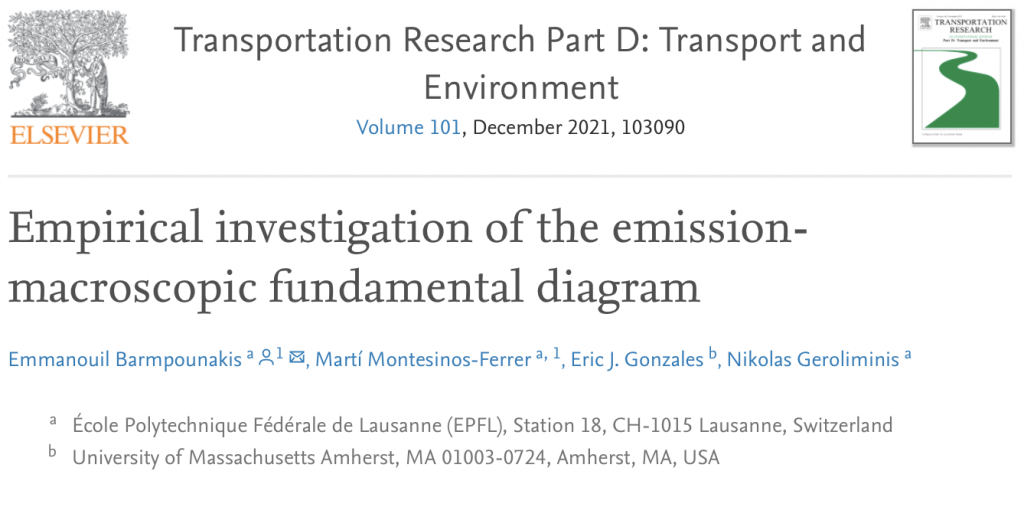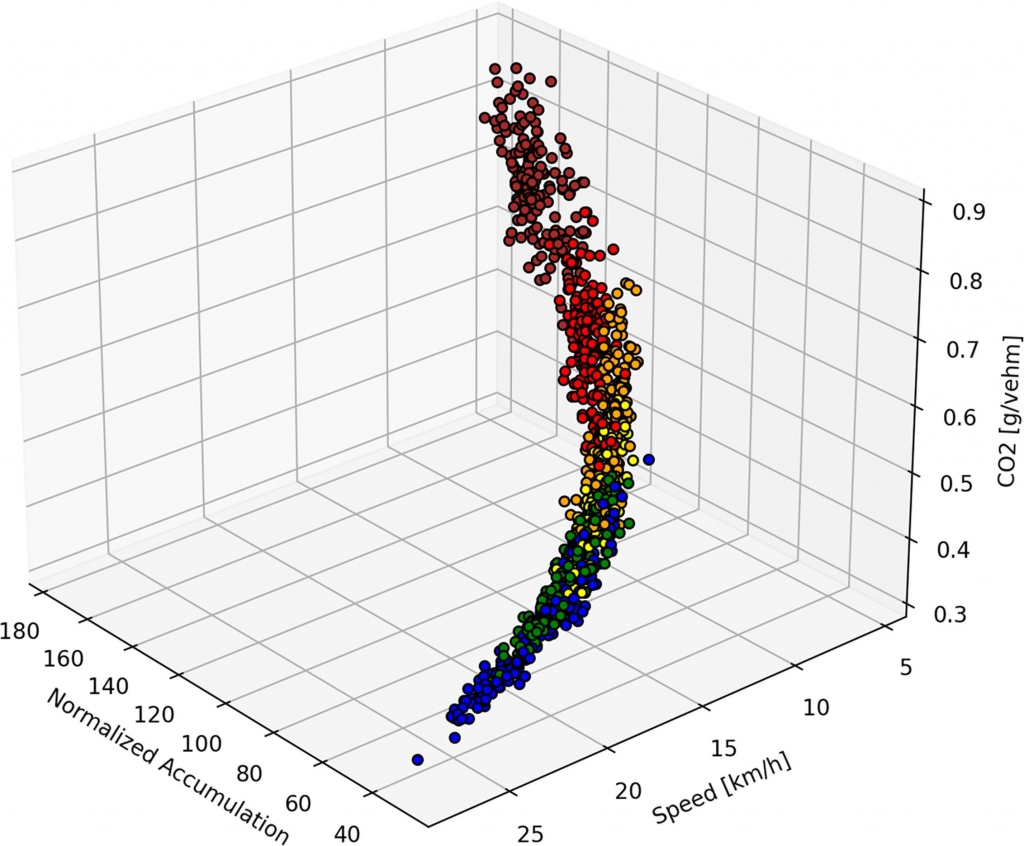
A new paper was published in Transportation Research Part D: Transport and Environment entitled “Empirical investigation of the emission-macroscopic fundamental diagram co-authored by LUTS members and Prof. Gonzales from University of Massachussets Amherts, USA.
Highlights
- We analyse vehicle emissions in a multi-modal urban area using the pNEUMA dataset.
- EPA’s microscopic emission model, project level MOVES is implemented.
- We investigate aggregated relations between emissions and congestion patterns.
- The macroscopic fundamental diagram (MFD) is extended to the emissions-MFD (e-MFD).
- The spatiotemporal distribution of vehicle emissions is revealed in high detail.
Abstract
Vehicle emissions are a major contributor of air pollution in urban areas, with severe consequences for public health and the environment. This paper focuses on analyzing vehicle emissions in a multimodal urban context to better understand its determinants and investigate relations between emissions and congestion patterns. Thousands of naturalistic trajectories collected with a swarm of drones during the pNEUMA experiment are analyzed and EPA’s microscopic emission model, project level MOVES, is implemented to estimate vehicular emissions. The method is developed and illustrated with a CO2 analysis. The results empirically show the aggregated relationships between congestion and vehicular emissions, while accounting for the individual characteristics of each trajectory. These systematic relationships on a network scale with the use of empirical data, allow us to extend the macroscopic fundamental diagram (MFD) to the emissions-MFD (e-MFD). The spatiotemporal distribution of emissions is also studied, highlighting areas with high concentration over the urban area.
Since everyone should know how important it is to leave their car at home, find the link to the open access article here.
